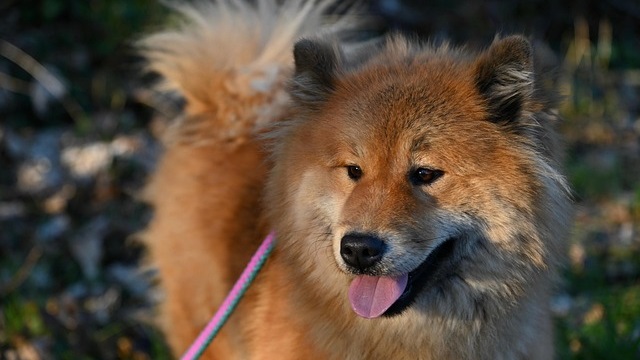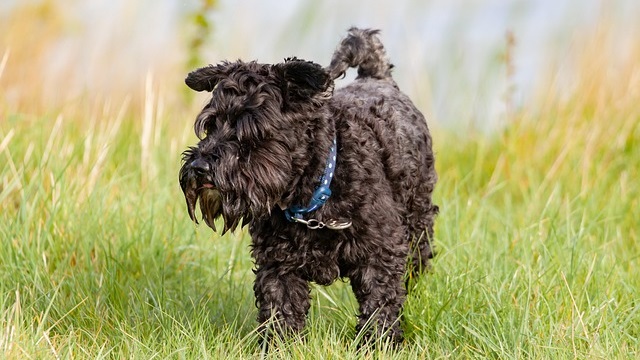Can a Dog Get Lice from a Human? What Pet Owners Need to Know
When you or someone in your household experiences a bout of lice, it’s natural to wonder: can a dog get lice from a human?
The good news is that while the thought might be unsettling, the answer is generally no.
However, understanding the specifics of lice and how they affect dogs is crucial for responsible pet care.
At Maven Pet, we understand that keeping track of your pet’s health is a top priority. That is why we developed an innovative monitoring system that offers valuable insights into your dog’s well-being, helping you stay informed about any changes that might indicate a health concern.
- Dogs cannot get head lice from humans; lice are species-specific and do not survive on different hosts.
- Canine lice spread through direct contact with infested dogs, especially in communal settings.
- Signs of lice in dogs include excessive scratching, visible lice, hair loss, and skin irritation.
- Preventive measures include regular grooming, avoiding contact with infested animals, and maintaining good hygiene.
Dog Lice vs. Human Lice: What’s the Difference?

The reason you don’t need to worry about your dog catching your head lice is the types of lice that infest humans are biologically adapted to thrive on human hosts and cannot survive for long on dogs.
Similarly, the lice that affect dogs, known scientifically as Linognathus setosus (the dog sucking louse), are specifically adapted to the canine body and cannot live on humans.
“I got the Maven sensor for my 14-year-old Chihuahua mix with heart and trachea issues. It gave me back peace of mind – I can track her RRR, BPM, drinking, and activity anytime and know instantly if something’s wrong. Highly recommend!”

★★★★★
Chiara De Luca
Titti
So, while direct contact with a person who has head lice won’t put your dog at risk, you should understand how do dogs get lice: canine lice are spread through direct contact with infested dogs. This can happen at dog parks, grooming facilities, or even through shared bedding and grooming tools if not properly cleaned. Poor hygiene can also contribute to a higher risk of lice infestation in dogs, although it’s not the primary cause.
How to Tell If Your Dog Has Lice

Recognizing the signs of lice infestation in your dog is the first step towards addressing the issue. Let’s go through some common symptoms to watch out for:
- Excessive scratching and biting: This is often the most noticeable sign as your dog tries to relieve the intense itching caused by the lice.
- Visible lice or nits (lice eggs): Adult dog lice are small (about 1-2mm long), flat, and wingless, often appearing pale or grayish-brown. Nits are tiny, oval-shaped eggs that are usually attached firmly to the base of the hair shafts.
- Hair loss and a rough, dull coat: Constant scratching can lead to patches of hair loss, and the overall coat may appear unhealthy.
- Skin irritation and inflammation: The bites of lice can cause redness, bumps, and even secondary skin infections if left untreated.
It’s important to differentiate what do dog lice look like from other common external parasites like fleas and mites.
Fleas are typically smaller, dark brown, and move quickly. You might also see “flea dirt,” which looks like tiny black specks.
Mites are often microscopic and cause different types of skin issues like mange. If you’re unsure, it’s always best to consult with your vet for an accurate diagnosis.
How to Treat and Prevent Dog Lice

While the question of can a dog get lice from a human is a common concern for pet owners (and thankfully, the answer is no), dogs are still susceptible to their own species-specific lice. If you suspect your dog has lice, you should seek immediate treatment to alleviate their discomfort and prevent further spread. Some effective treatment options include:
- Medicated shampoos: These shampoos contain insecticides that kill adult lice. Multiple treatments are usually necessary to kill newly hatched lice.
- Veterinarian-prescribed treatments: In some cases, your vet may recommend topical medications or oral treatments for more severe infestations.
- Thorough cleaning: Wash all your dog’s bedding, collars, and grooming tools in hot, soapy water. Vacuum carpets and furniture thoroughly to remove any stray lice or eggs.
Prevention is Always Better Than Cure

You can help prevent dog lice by:
- Grooming regularly: This allows you to check your dog’s coat for any signs of parasites early on.
- Avoiding contact with infested animals: Be cautious when your dog interacts with unfamiliar dogs, especially in crowded environments.
- Maintaining good hygiene: While not the primary cause, a clean living environment can help reduce the risk of infestation.
This is where Maven Pet’s real-time health tracking can be a valuable asset for pet wellness.


Monitor heart rate, respiratory rate, activity & rest, drinking, itch behavior.
Our system can automatically identify subtle changes in your dog’s behavior, such as an increase in head scratching. This early symptom detection can help identify a lice infestation or other skin health issues before they become more severe.
By monitoring these patterns, you can proactively address your dog’s needs and ensure their comfort.
So, Can a Dog Get Lice from a Human?

No, the lice that affect humans and dogs are species-specific and cannot be transmitted between the two.
However, dogs can certainly get their own type of lice through contact with other infested dogs or contaminated environments. Recognizing the signs of dog lice and implementing appropriate treatment and preventative measures are crucial for maintaining your pet’s health and well-being.
For Maven Pet users, our pet smart collar offers an extra layer of vigilance.
By tracking your pet’s activity and identifying potential indicators of discomfort, like increased scratching, you can stay ahead of potential health concerns and ensure your furry friend enjoys a happy and healthy life.
Pay close attention to any changes in your dog’s skin health, and don’t hesitate to consult your vet if you suspect a problem.
Maven Pet focuses on improving the quality of life of our pets with technology, using artificial intelligence (AI) to enable proactive pet care. By accurately collecting and monitoring pet data 24/7 and flagging any irregularities, Maven Pet empowers pet parents and veterinarians to stay ahead of potential health issues, ensuring the well-being and longevity of our beloved companions.




